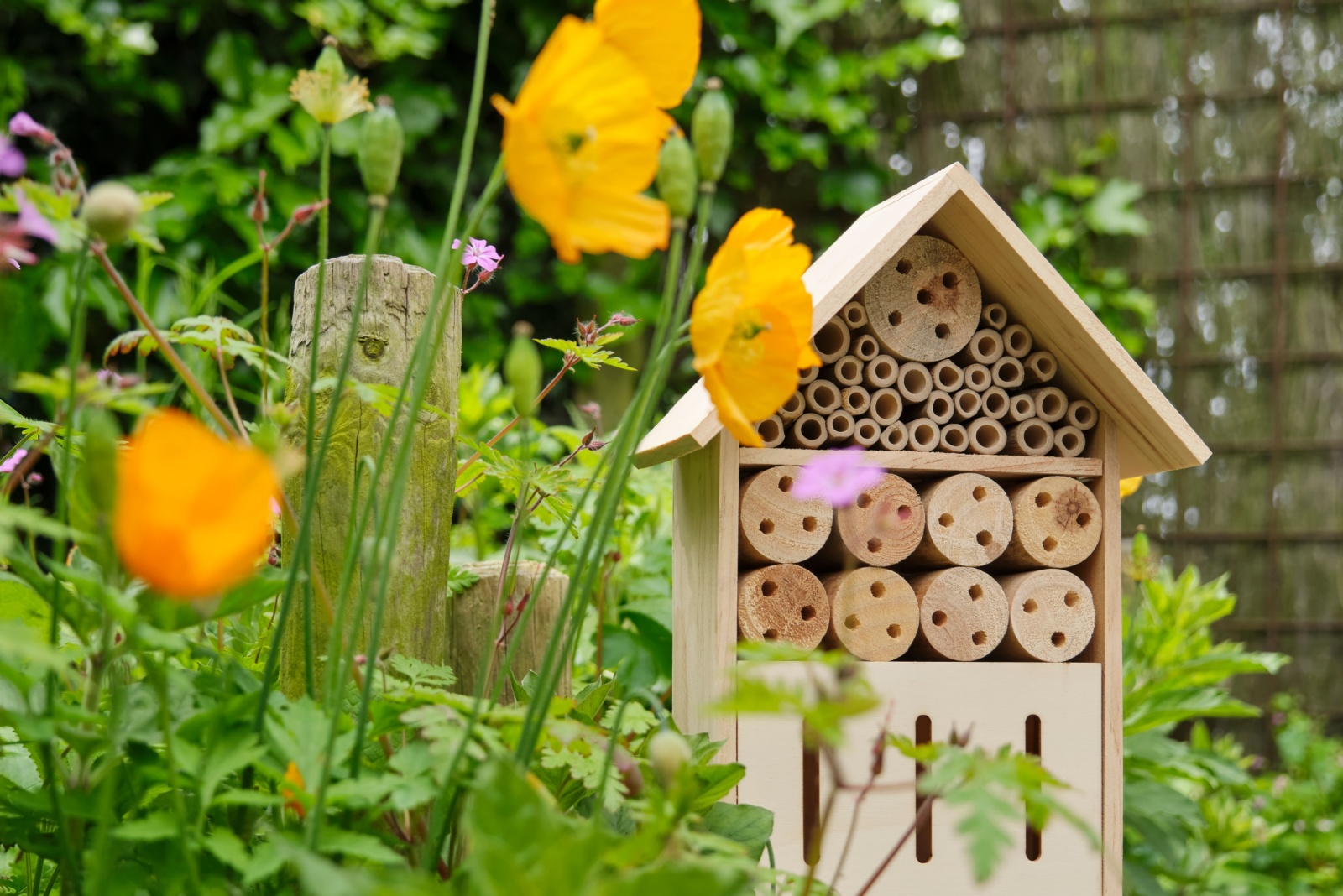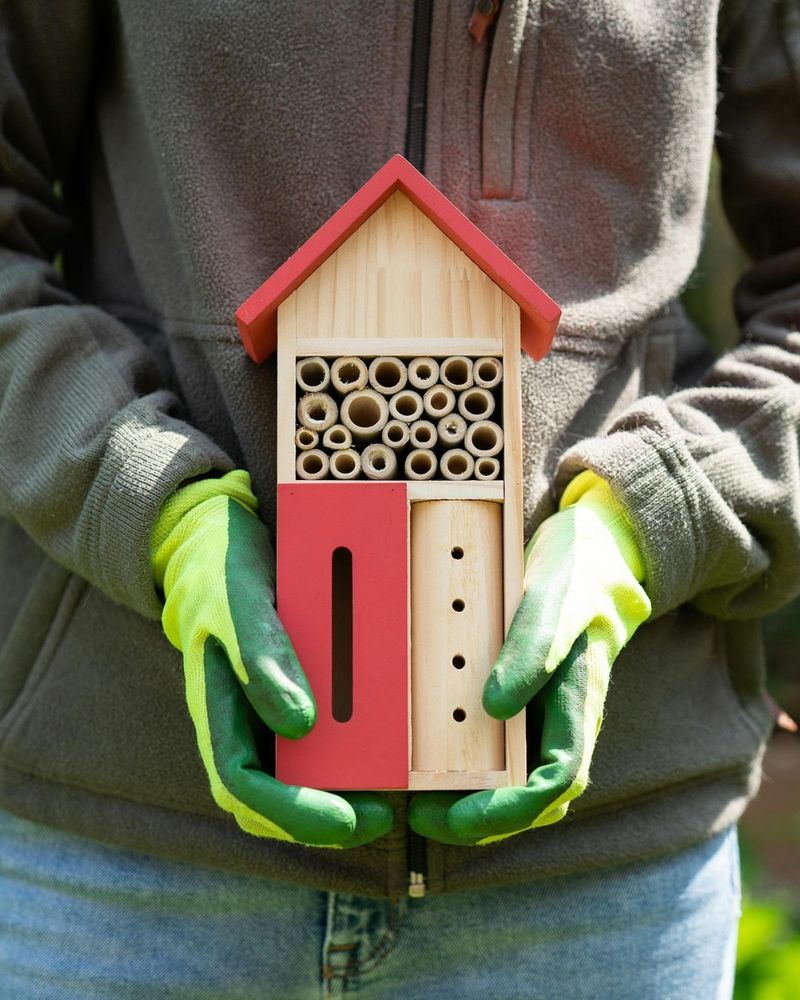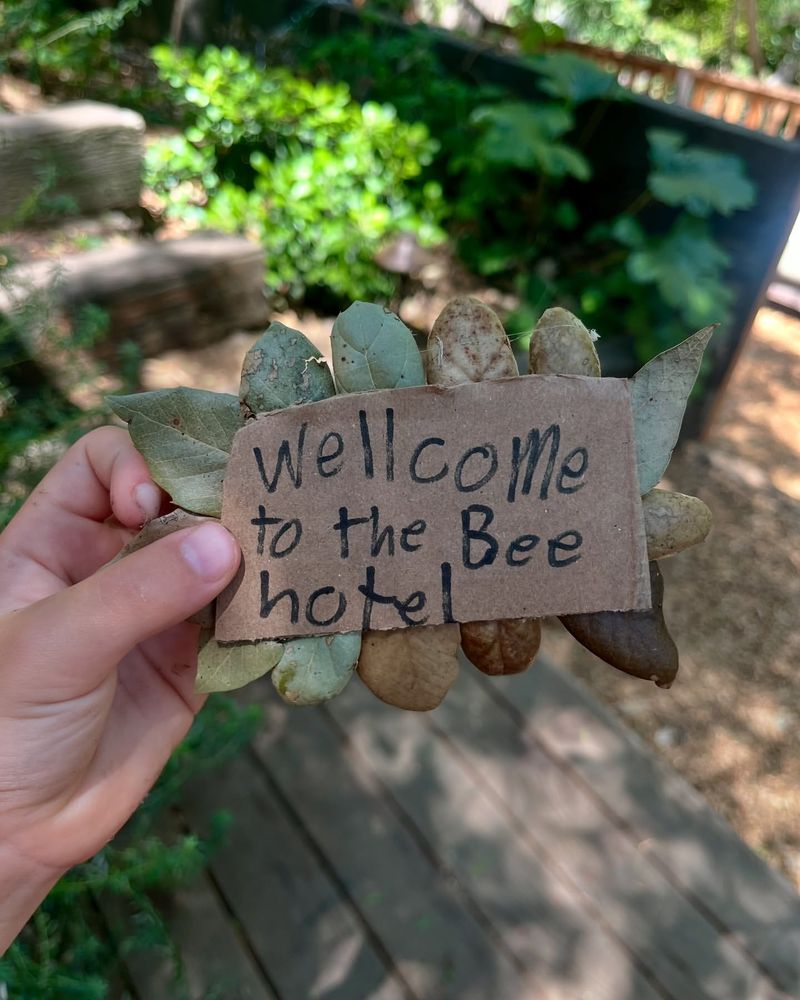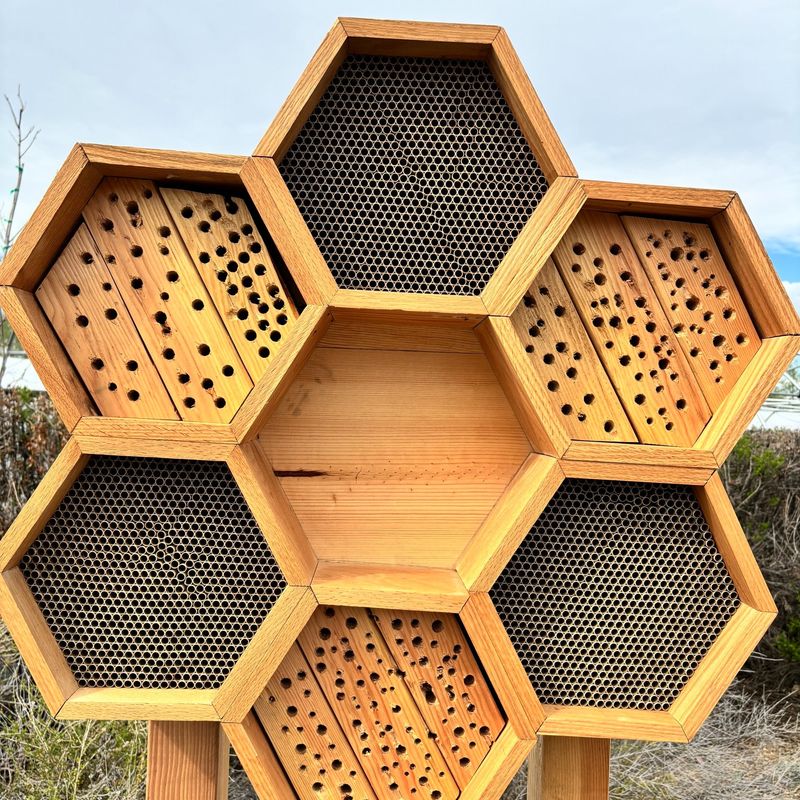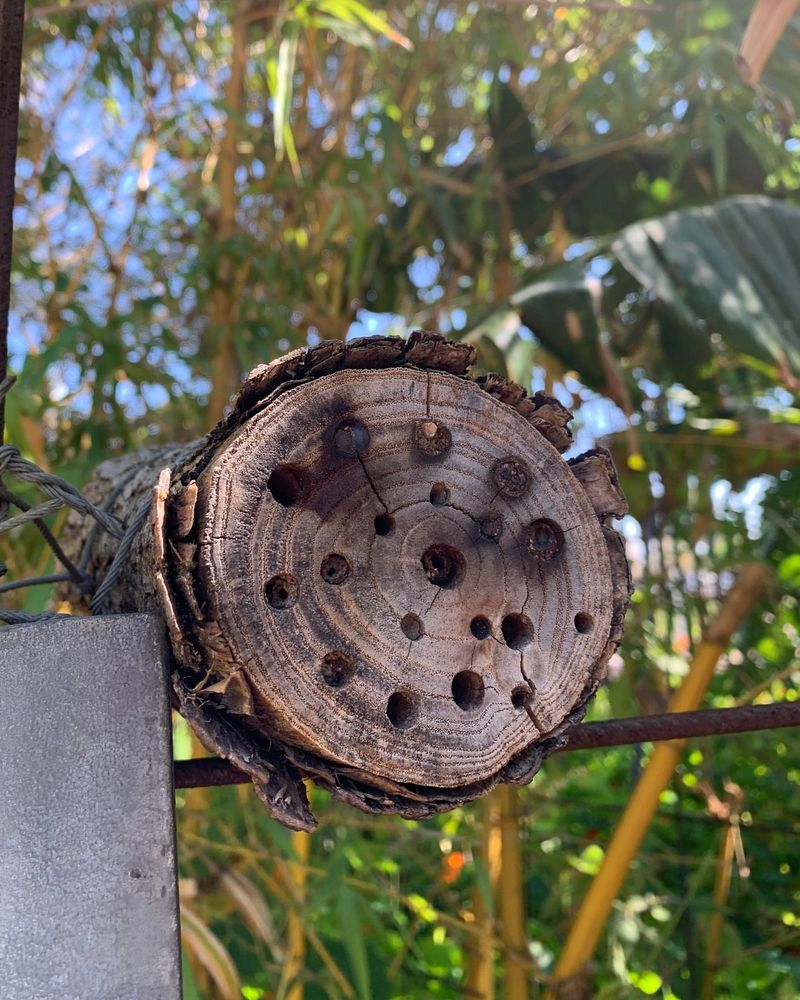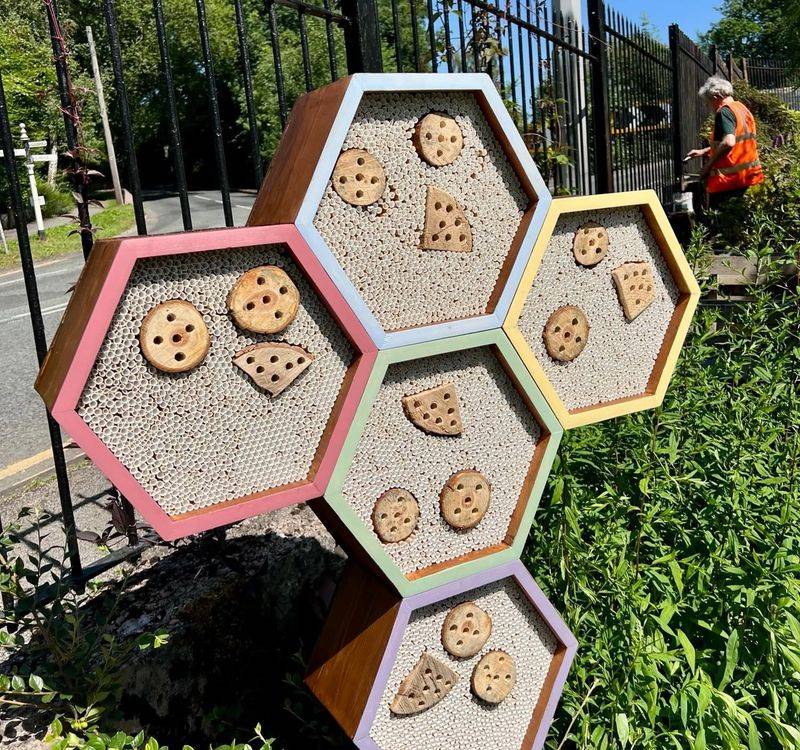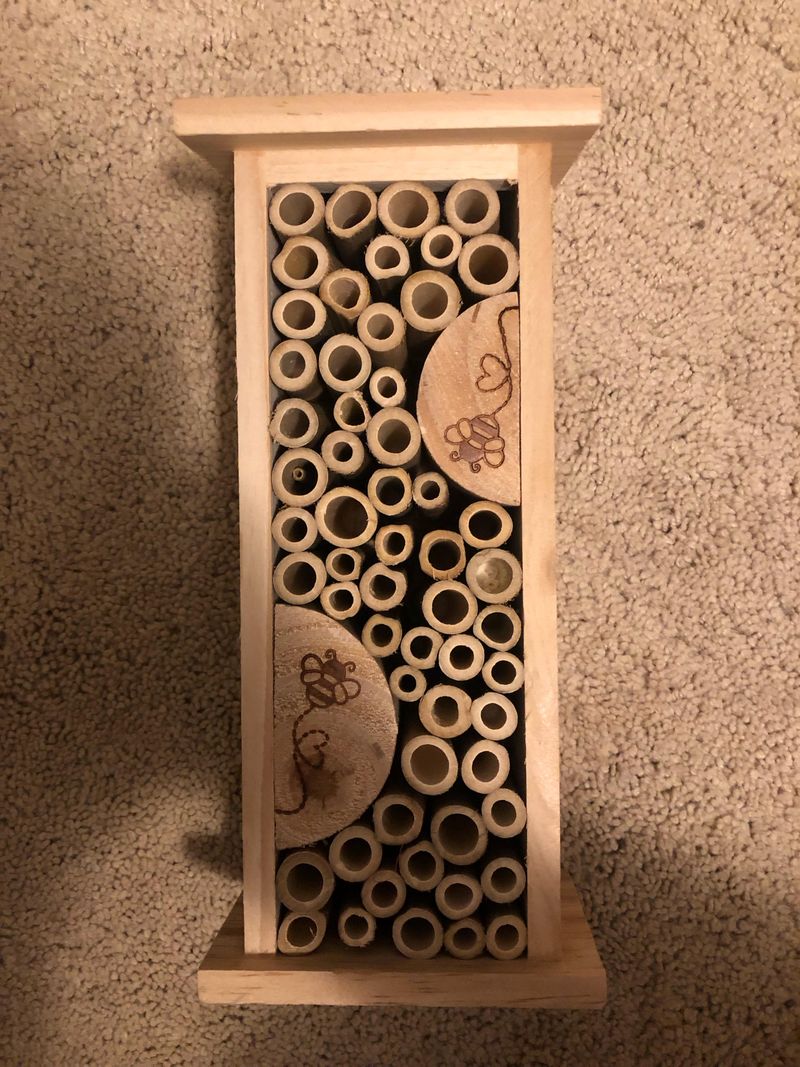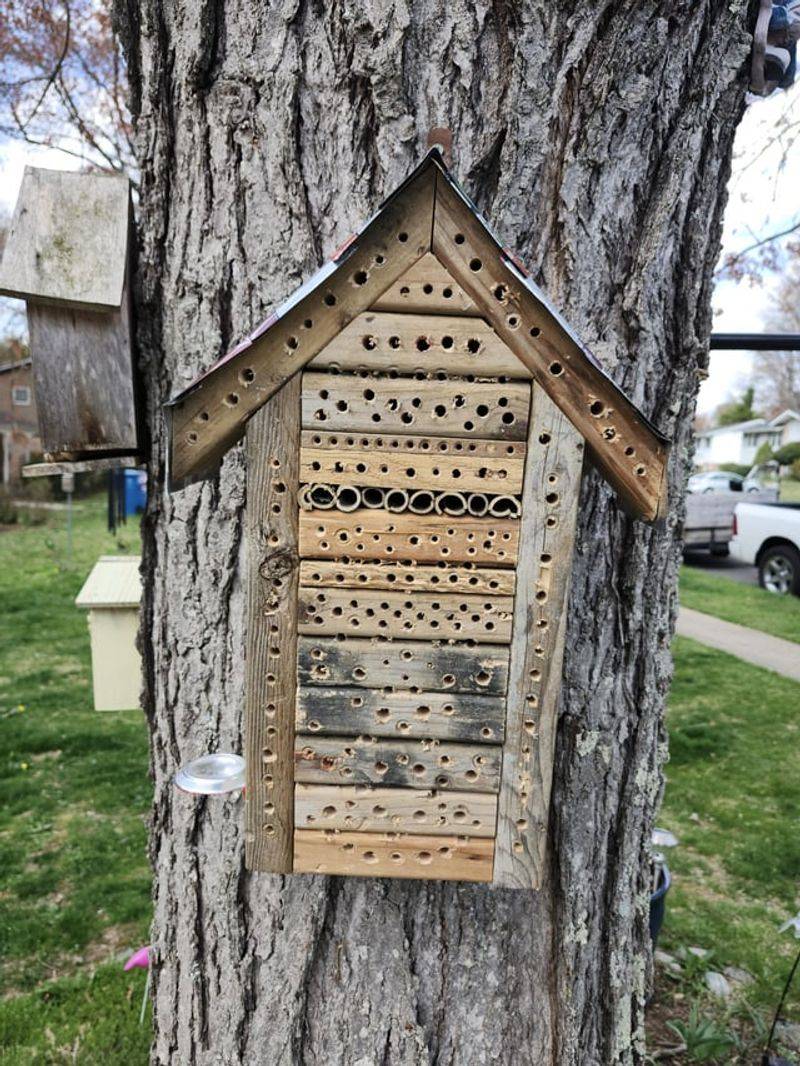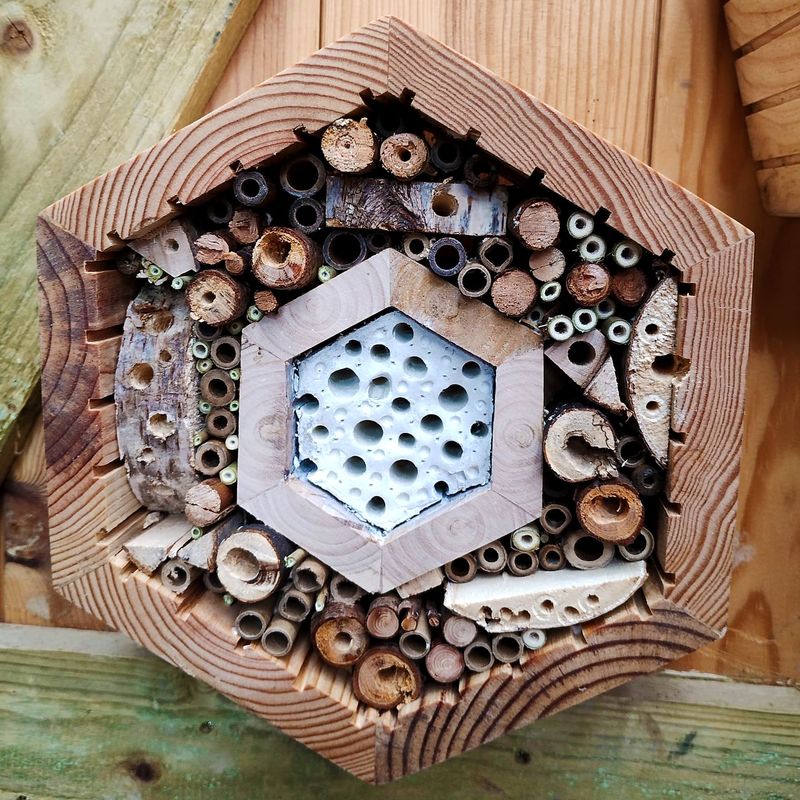Vermont’s native bees are in trouble, and a bee hotel is a simple way to lend a hand. It’s a fun weekend project with real impact. Plus, it turns scrap wood into something truly meaningful.
By building a cozy spot for solitary bees, you’re helping vital pollinators thrive. These gentle, non-aggressive bees support gardens and wild plants alike. They just need safe places to nest.
A bee hotel adds charm to your yard while boosting Vermont’s ecosystem. It’s a small effort with big rewards—for your flowers, your veggies, and the buzzing life that keeps it all growing.
1. Gather Your Vermont-Friendly Materials
Start with a collection of untreated scrap wood from your shed or local woodworker. Pine, cedar, and maple work wonderfully—all abundant in Vermont’s forests.
You’ll need a wooden box frame (about 8×12 inches), bamboo tubes or drilled wood blocks, some mesh wire to protect from predators, and a small piece of metal for the roof. I’ve found that maple scraps from a neighbor’s woodworking shop create the most durable hotels.
2. Choose The Perfect Location First
Before building, scout your property for the ideal spot. Bee hotels thrive in sunny, east-facing locations sheltered from Vermont’s notorious north winds and rain.
Mount your hotel about 3-5 feet off the ground near flowering plants like bee balm or purple coneflower. In my Burlington garden, the hotel beside my herb patch attracts dozens of mason bees each spring, proving location truly matters.
3. Design Your Bee Hotel Blueprint
Sketch a simple plan for your hotel with measurements. Most successful Vermont bee hotels feature a rectangular frame about 8 inches deep with a sloped roof to shed our heavy snow and spring rain.
Plan for various-sized nesting tubes between 2-10mm in diameter to attract different native species. During a workshop at the Intervale Conservation Nursery, I learned that diverse hole sizes attract up to seven different bee species found in the Champlain Valley.
4. Construct A Weather-Resistant Frame
Assemble your frame using wood screws rather than nails for durability through Vermont’s freeze-thaw cycles. Create a solid back wall and add a sloped roof extending about 2 inches beyond the front.
Sand rough edges to prevent splinters when handling. My first hotel lasted five winters on our Montpelier homestead because I sealed the joints with beeswax from a local apiary. This natural waterproofing method works better than commercial products for our climate.
5. Drill Nesting Holes With Care
For drilled wood blocks, use hardwood pieces at least 6 inches deep. Drill holes ranging from 2-10mm in diameter, keeping them smooth inside and slightly angled upward to prevent rain from entering.
Space holes about 3/4 inch apart to prevent weakening the wood. During a visit to the North Branch Nature Center, their naturalist showed me how to gently sand each hole entrance, removing splinters that could damage delicate bee wings as they come and go.
6. Add Natural Protective Elements
Protect your bee hotel from Vermont’s hungry woodpeckers by attaching chicken wire about an inch from the front surface. This creates a barrier while allowing bees easy access.
Install a metal roof overhang to shield from our summer thunderstorms and winter snow. Last summer at my Waterbury garden, I watched a downy woodpecker try repeatedly to reach the nesting tubes before giving up—proof that simple protection works. Consider adding local birch bark as decorative, weather-resistant siding.
7. Maintain Your Bee Hotel Through Vermont Seasons
Replace nesting materials every two years to prevent parasite buildup. In fall, gently clean empty tubes and remove any spider webs without disturbing occupied nests.
During harsh Vermont winters, I cover my hotel with burlap in January and February for extra protection against -20°F nights. Come spring, position the hotel near early-blooming plants like wild bergamot and native willows to give emerging bees immediate food sources after their long winter dormancy.
8. Crafting The Perfect Bee Hotel Entrance
The entrance to your bee hotel determines which beneficial pollinators will move in! Using a drill with various bit sizes (between 2-10mm), create holes in blocks of untreated hardwood scraps. Cedar, maple, and birch work wonderfully and are abundant in Vermont workshops.
Drill holes at least 3-6 inches deep but never all the way through. Sand around the openings to remove splinters that might damage delicate bee wings. Remember that different hole sizes attract different bee species – mason bees prefer 8mm openings while smaller leafcutter bees choose 6mm holes.
Fun fact: Female bees typically lay female eggs at the back of tunnels and male eggs near the entrance!
9. Creating A Rustic Vermont-Style Protective Overhang
Vermont’s harsh winters and rainy springs demand proper protection for your bee tenants. Fashion a charming pitched roof overhang from scrap pine or cedar boards that extends at least 2 inches beyond the front of your hotel. This simple addition prevents rain from soaking the nesting tunnels and keeps snow from building up.
Secure your overhang with waterproof wood glue and small nails. For authentic Green Mountain style, consider adding birch bark decorative elements or a small Vermont maple leaf cutout along the edge.
Mount the completed hotel facing southeast to catch morning sun that warms up early-rising bees. Your protective overhang will extend the life of your bee hotel through many Vermont seasons!

